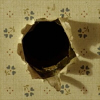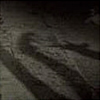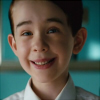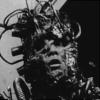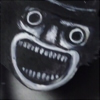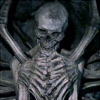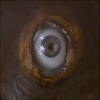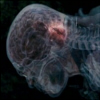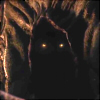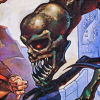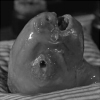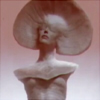
By Jonathan Wojcik
ENTRY 14: ERASERHEAD
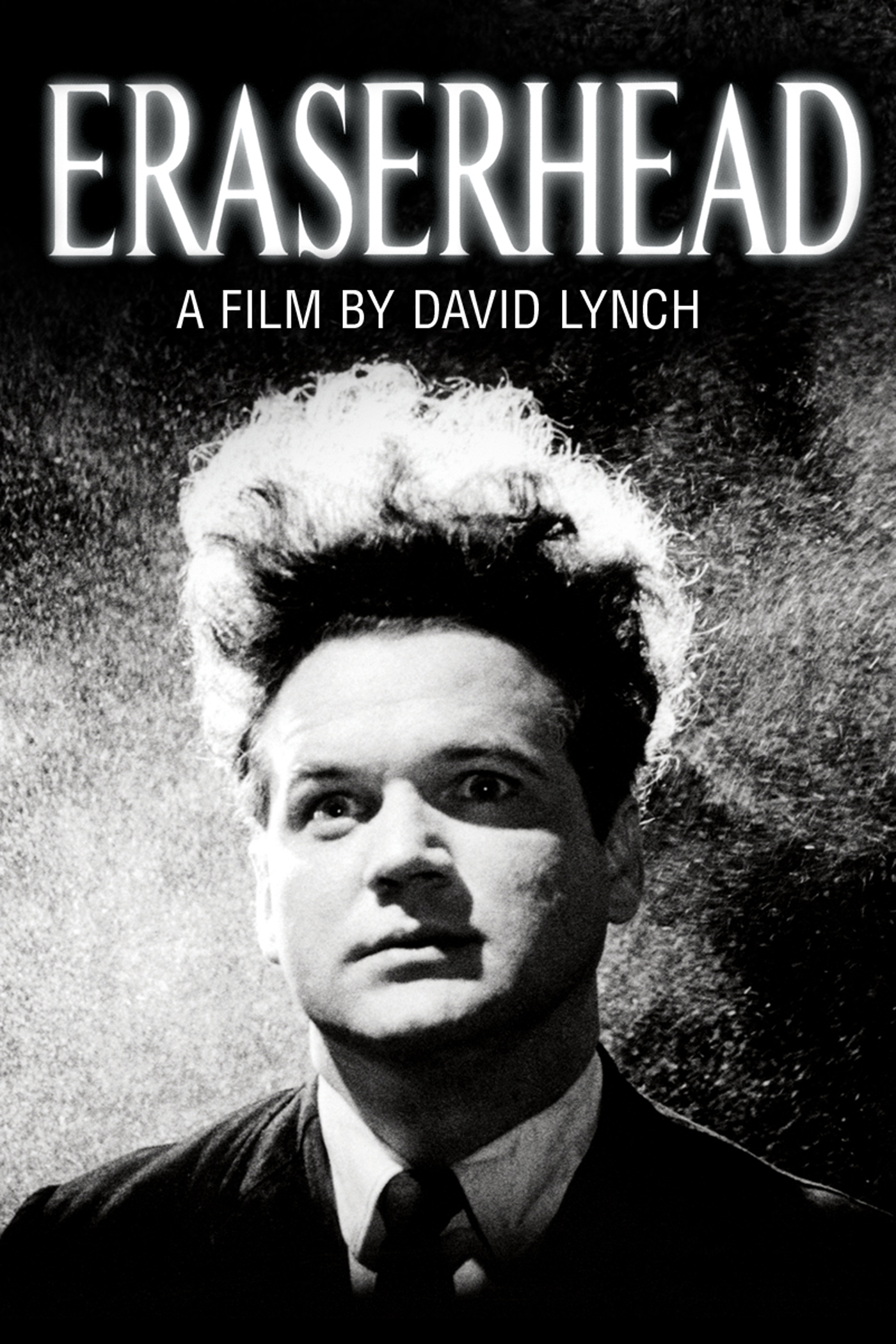
David Lynch is famous world wide as a "surrealistic" or at least a director of "very weird" media, but it's a reputation we arguably still owe more to his 1977 feature length debut than the rest of his filmography combined. Initially playing in relatively few theaters to lukewarm reception, it has since gone down as a historically important and wildly influential work that just about everyone has heard about at some point, and might remain the most abstract feature film to achieve even its still modest level of fame. Not quite fully mainstream, but hardly fair to call "obscure."
Those who have never watched it are likely only aware that it is "weird." So does it actually live up to that hype? I'll let you be the judge as I go over its loose storyline:
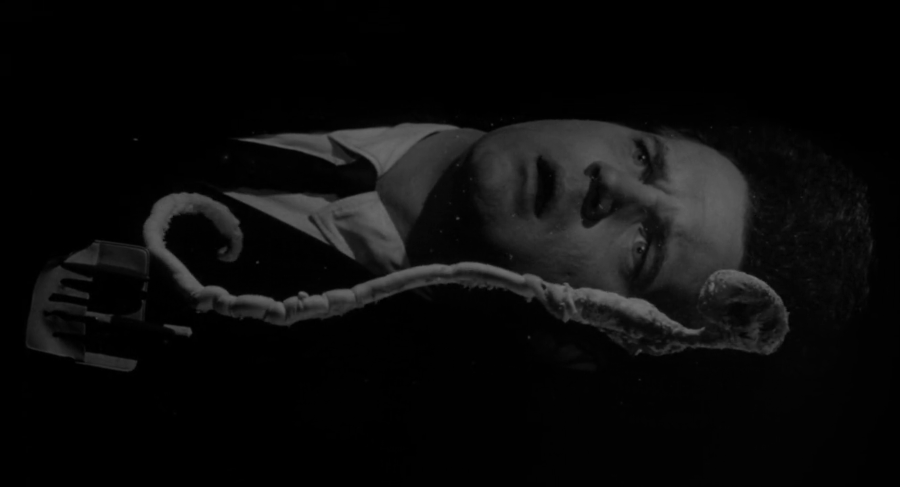
Jack Nance plays Henry Spencer, first seen as a giant head floating in space while a sperm-like organism flies out of his face. We also a character known only as The Man in the Planet (Jack Fisk) operating some sort of control console inside a hovering, hollow sphere.
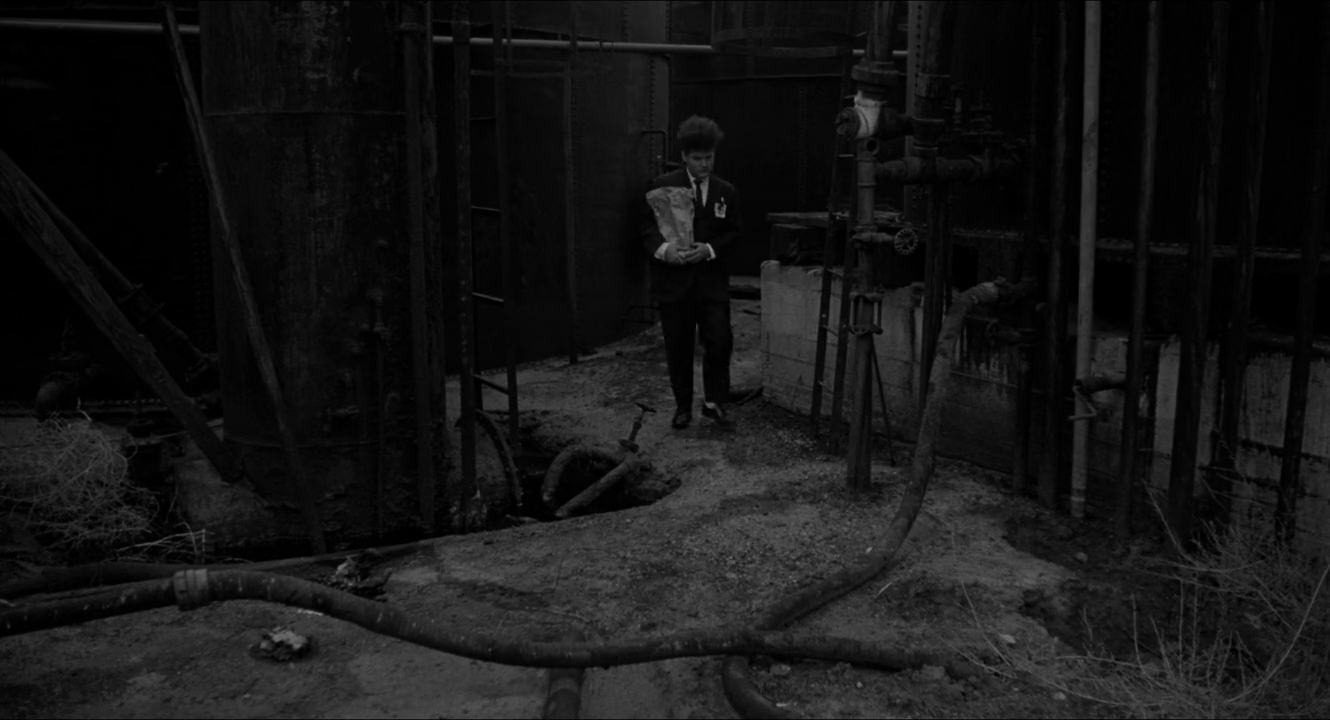
We then cut to our main setting: a bleak, oppressive city of brutalist architecture, whining machinery and belching smokestacks, where Henry has been out buying groceries and just now coming home to his gloomy, greyish slab of an apartment building. There, for whatever reason, it's his neighbor (Judith Anna Roberts, whose character is only named The Beautiful Girl Across the Hall) who informs him that he's to have dinner that night at the family home of his girlfriend, Mary X (Charlotte Stewart.)
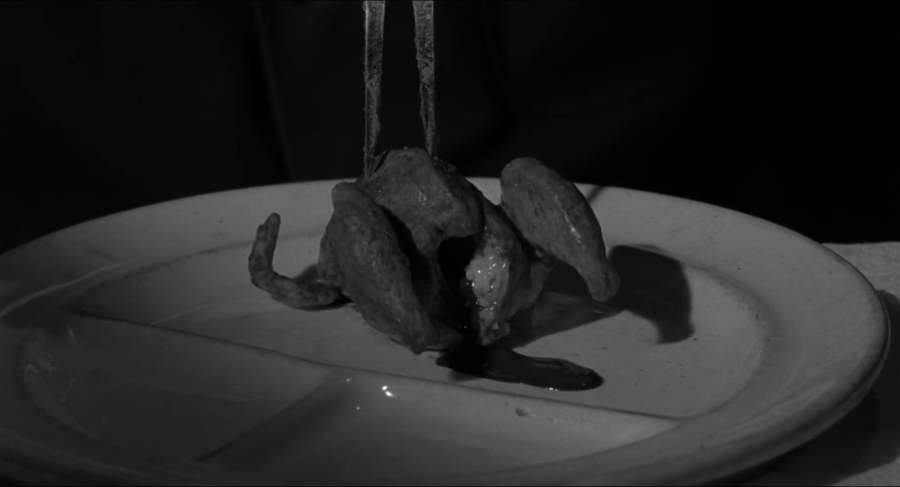
At dinner, Mary's father, Bill, informs him they'll be having "man made" chickens; that they're strange and they're small, but they're "new." As the family makes awkward small talk with Henry, Bill goes on to discuss that he's worked for decades as a plumber, which turns into a furious rant about how he's responsible every pipe in the city, but people still think pipes "grow" in their homes.
Henry is invited to carve the first of the tiny little chickens, but the bird carcass spreads its legs as he does so and begins spewing blood, while Mary's mother begins to make orgasmic noises at the dinner table. Later, she corners him alone, grills him about his sex life and tries to make out with him before he learns that the whole dinner is really about the fact that Mary has given birth, and her parents insist Henry take responsibility for it...though Mary herself doubts as to whether or not it really is a "child" at all.
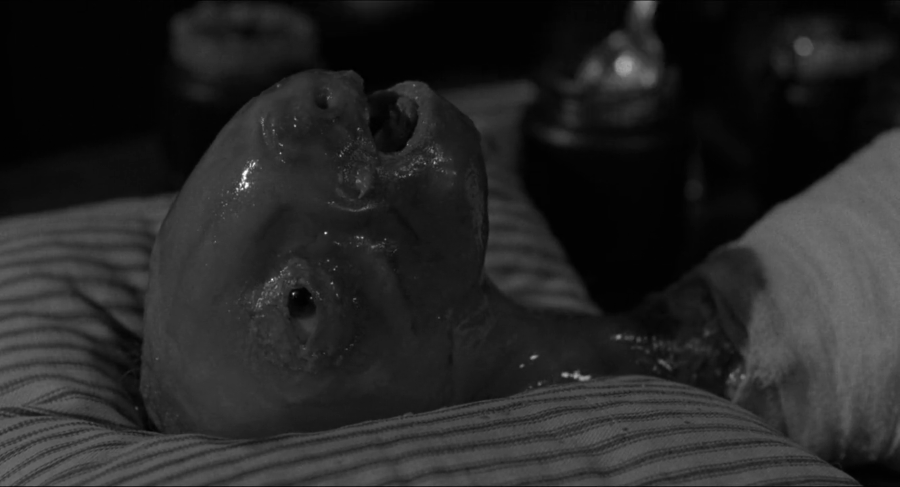
This child - or at least the prop that portrays him - was nicknamed
Spike during production, and it's stuck around as the unofficial name of the character itself. Haphazardly explained away as "premature," he looks more like an animal fetus than a human being, actually shaped almost exactly like the giant sperm-thing we saw in the opening shots. Wrapped tightly in gauze from the neck down, the pitiful creature can do virtually nothing but lie on his back, softly whimpering almost round the clock. After only days of living at Henry's apartment, Mary eventually can't stand Spike's sobbing anymore and walks out on them both, abandoning her child-esque-thingy and leaving Henry a single dad.
He does his best, but Spike's health deteriorates quickly in his care, breaking out with sores and having difficulty breathing or eating.
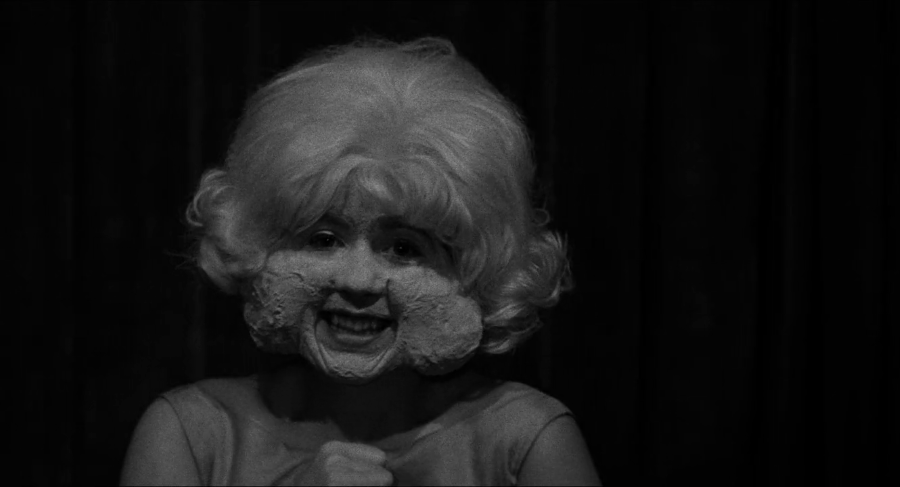
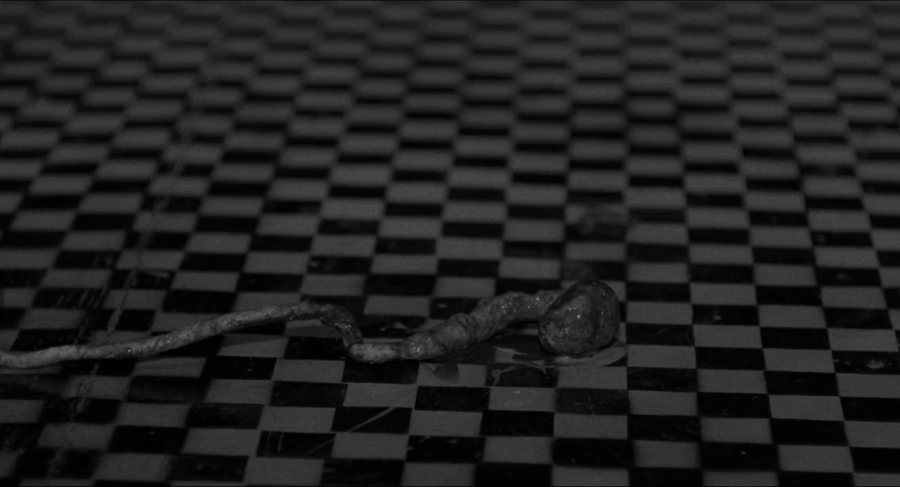
Henry's only small relief from his lonely, crushing existence are the fantasies that revolve around his radiator, yes I mean the metal thing that generates heat. He imagines there's a little stage behind it, where a woman with gigantic, swollen cheeks "dances" (steps slowly side to side) singing a little song. As she does so, those wormy sperm things fall from the sky onto the stage and she nervously either steps over them or crushes them to goo under her heels. Henry please just get a Sears catalog or something.
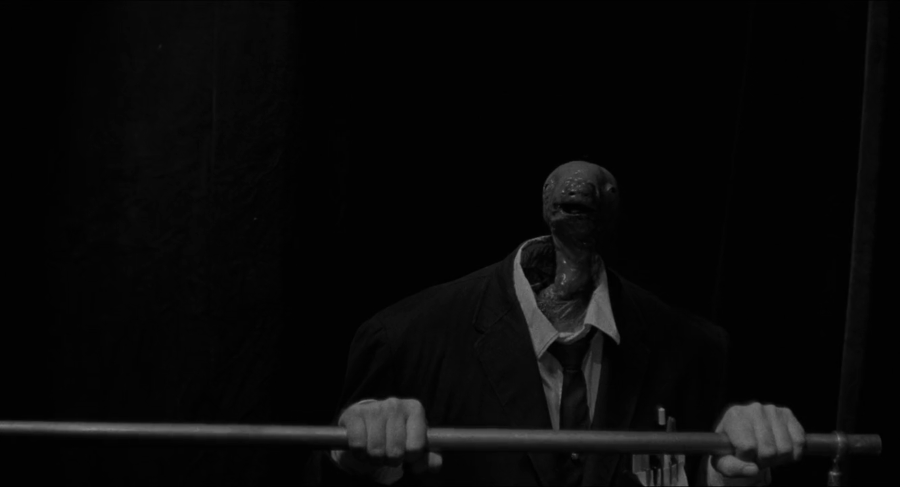
Henry later spends a night with the real woman across the hallway, but later has another, weirder vision of the Radiator Lady. This time, as she sings, he sees his own head pop off, only to be replaced with the head of Spike. His original head is then found in the street by a little boy who brings it to a pencil factory, where the head is fed into a machine that grinds it down into - what else? - erasers!
When he wakes from this nightmare, he tries to return to his sexy neighbor, but he finds her sleeping with some other dude.
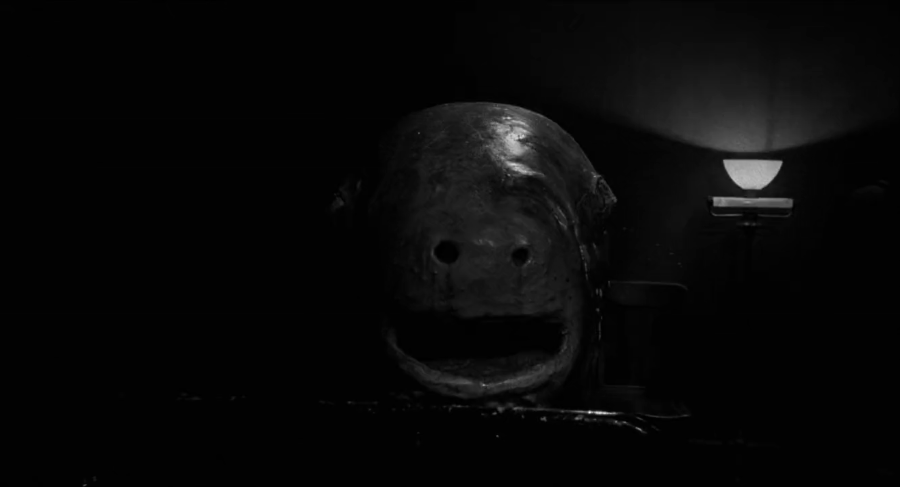
We then watch as Henry decides to remove Spike's gauze, and it turns out Spike doesn't even have a body underneath; he's skinless and boneless, with nothing behind the wrappings other than his internal organs. The poor little guy begins shivering intensely, and Henry stabs Spike's heart with the scissors in an attempt to end the creature's misery as well as his own.
Disturbingly, the wound begins to gush nothing but the same lumpy porridge Henry has been feeding him, gallons and gallons of it erupting from the relatively tiny being. The electricity in the apartment begins fluctuating, bulbs burn out, and a gigantic version of Spike's face is seen looming from the darkness.
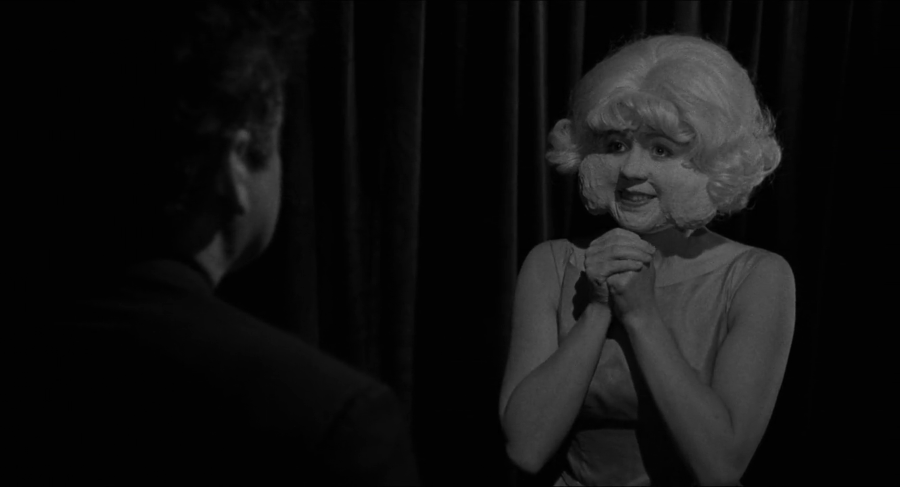
This final nightmare shifts to a vision of the little planet thing from the start of the film, where the Man in the Planet's control console is sparking and breaking down. We then see Henry being held by the Radiator Lady as they're bathed in light, and the film ends.
MONSTER ANALYSIS: SPIKE
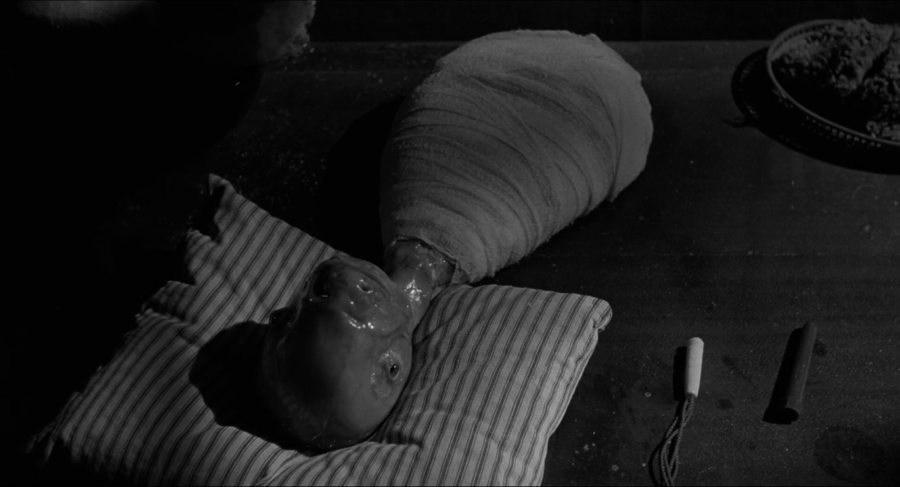
David Lynch has never been willing to clarify anything one way or another about
Eraserhead, but its social themes are hardly disguised; from the towering concrete architecture to the brick wall directly outside Henry's window, it's a movie about feeling alone and trapped in a tedious and hopeless life. Lynch's daughter Jennier has been a bit more open about the film, having said that it was inspired in part by the hardships that ensued from her own unexpected conception and the medical bills needed to correct her "severely clubbed feet."
Lynch has also refused to share any details of the actual Spike prop, suggesting it was "found" or "born nearby" and allegedly blindfolding one or more members of the crew to keep its construction a secret. This has lead to speculation that it was built from an actual stillborn animal, such as a lamb, but it's more likely everyone involved was simply having fun treating a weird, latex puppet as a seedy or even paranormal mystery.
The fleeting moments of alternate worldbuilding in the film have always kind of intrigued me; the mention of the tiny "new" chickens for example, and that people for some reason think that plumbing grows naturally. Literal interpretation of the narrative paints a gloomy but fascinatingly odd portrait of an industrial civilization that's gone down an even more dystopian and unnatural path than our own, but not so far removed that you can't just as easily imagine its events in any actual city of our own timeline. The most disturbing instance of this is by far the fact that, even having given birth to Spike herself, Mary isn't fully convinced that it qualifies as human. Is she simply being cold and ignorant towards a human that came out "abnormal," or is she implying so casually that her body might have spontaneously gestated something else altogether? If the latter, then it isn't treated as anything other than an irritating inconvenience, which raises a lot of questions about just how polluted and miserable their world has become.
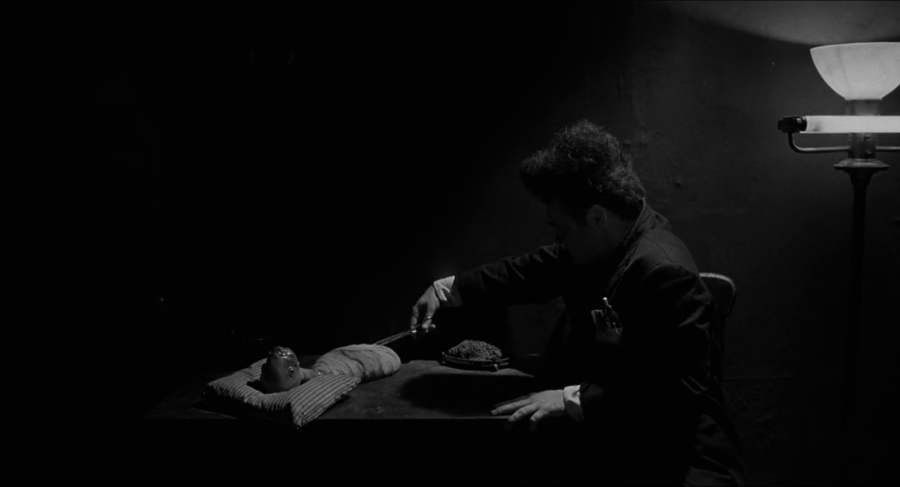
Almost every "surreal" moment in the movie - the chickens, the radiator woman and more - has an undertone (or overtone) of reproduction, with Spike representing its most negative possible outcomes when he dissolves his parents' relationship and requires almost every moment of Henry's attention and labor to maintain. The fact that Spike himself cannot be blamed for any of this and cannot possibly comprehend it only adds to the sense of anxiety, the guilt that drives Henry to keep caring for the obviously doomed mutant. It's easy to understand why he feels so trapped and miserable, even when we all likely sympathize so much more with the pathetic little creature that depends upon him.
Spike himself isn't always thought of as a "movie monster" or a "horror antagonist," especially given that he's a symbolic stand-in for the idea of an actual human baby and that he poses no actual threat to anyone or anything, but his
narrative function unmistakably categorizes him as both, and I've always remained fascinated by the idea of a "monster" or "villain" that's so innocent, harmless and entirely helpless to the very end of the story; that he's an object of fear and an antagonistic force through the sheer sadness and isolation he brings to his unwitting caretaker, that
his own unpredictable and unstoppable suffering is the source of the horror.
If everyone knew he was little more than a sack of entrails, it was cruel to even keep him alive for as long as they did; he was doomed to a short and torturous existence from the beginning, and Henry's final act was a merciful one whether or not he knew what he would find under the gauze. So while Spike may be the narrative monster and antagonist through no fault of his own, the "villain" or "evil" of the story is the world that forced him into existence at all; a setting so poisonous and hopeless that Spike may
still have been one of the luckier characters by the time the credits roll.
NAVIGATION:
